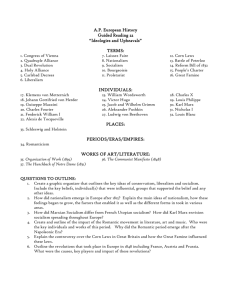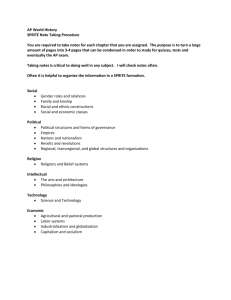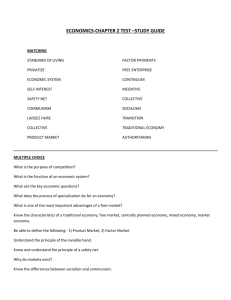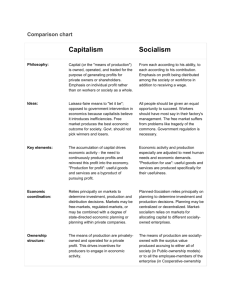A History of Western Society
advertisement
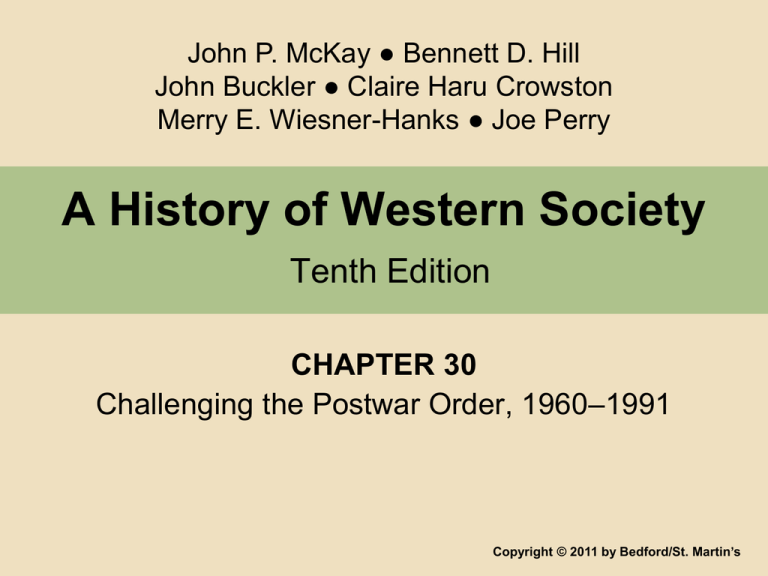
John P. McKay ● Bennett D. Hill John Buckler ● Claire Haru Crowston Merry E. Wiesner-Hanks ● Joe Perry A History of Western Society Tenth Edition CHAPTER 30 Challenging the Postwar Order, 1960–1991 Copyright © 2011 by Bedford/St. Martin’s I. Reform and Protest in the 1960s A. Cold War Tensions Thaw 1. The Shift to the Left 2. Détente and Ostpolitik 3. The Helsinki Accords 4. The Welfare States B. The Affluent Society 1. Consumer Society 2. Fears of Consumerism 3. Family Ties I. Reform and Protest in the 1960s C. The Growing Counterculture Movement 1. Demographics 2. American Inspiration 3. The New Left 4. The Sexual Revolution D. The United States and Vietnam 1. American Involvement 2. Criticism 3. American Withdrawal I. Reform and Protest in the 1960s E. Student Revolts and 1968 1. Demonstrations 2. The May Events 3. Divisions Within the Counterculture F. The 1960s in the East Bloc 1. Limited Market Economies 2. Limited Cultural Freedoms 3. The Prague Spring (1968) 4. The Brezhnev Doctrine II. Changing Consensus in Western Europe A. Economic Crisis and Hardship 1. Collapse of the International Monetary System 2. OPEC and the Oil Crisis 4. Towards a Postindustrial Society II. Changing Consensus in Western Europe B. The Conservative Backlash 1. Neoliberalism 2. Margaret Thatcher 3. Ronald Reagan 4. Helmut Kohl 5. Francois Mitterand II. Changing Consensus in Western Europe C. Challenges and Victories for Women 1. The Feminist Movement 2. The Feminist Critique A. Simone de Beauvoir (1908-1986) B. Betty Friedan (1921-2006) 3. The Feminist Movement II. Changing Consensus in Western Europe D. The Rise of the Environmental Movement 1. Rachel Carson 2. The Ecological Agenda 3. Environmental Groups II. Changing Consensus in Western Europe E. Separatism and Right-Wing Extremism 1. Separatist Movements 2. The ETA 3. The Provisional Irish Republican Army (IRA) 4. Right-wing Extremists III. The Decline of "Really Existing Socialism” A. State and Society in the East Bloc 1. Really Existing Socialism 2. Everyday Life 3. Economic Decline 4. The One-Party State III. The Decline of "Really Existing Socialism” B. Reform Movements in Czechoslovakia and Poland 1. New Approaches 2. Vaclav Havel 3. Karol Wotyla 4. Solidarity III. The Decline of "Really Existing Socialism" C. From Détente Back to Cold War 1. The End of Détente 2. The American Response D. Gorbachev's Reforms in the Soviet Union 1. Administrative Controls 2. Mikhail Gorbachev (b. 1931) 3. Perestroika 4. Glasnost 5. Additional Reforms IV. The Revolutions of 1989 A. The Collapse of Communism in Eastern Europe 1. Events in Poland 2. Events in Hungary 3. Events in East Germany 4. The Velvet Revolution in Czechoslovakia 5. Events in Rumania IV. The Revolutions of 1989 B. German Unification and the End of the Cold War 1. Popular Support 2. Helmut Kohl 3. International Agreement IV. The Revolutions of 1989 C. The Disintegration of the Soviet Union 1. Electoral Defeats 2. Boris Yeltsin (1931–2007) 3. The Coup 4. The Collapse of the USSR
